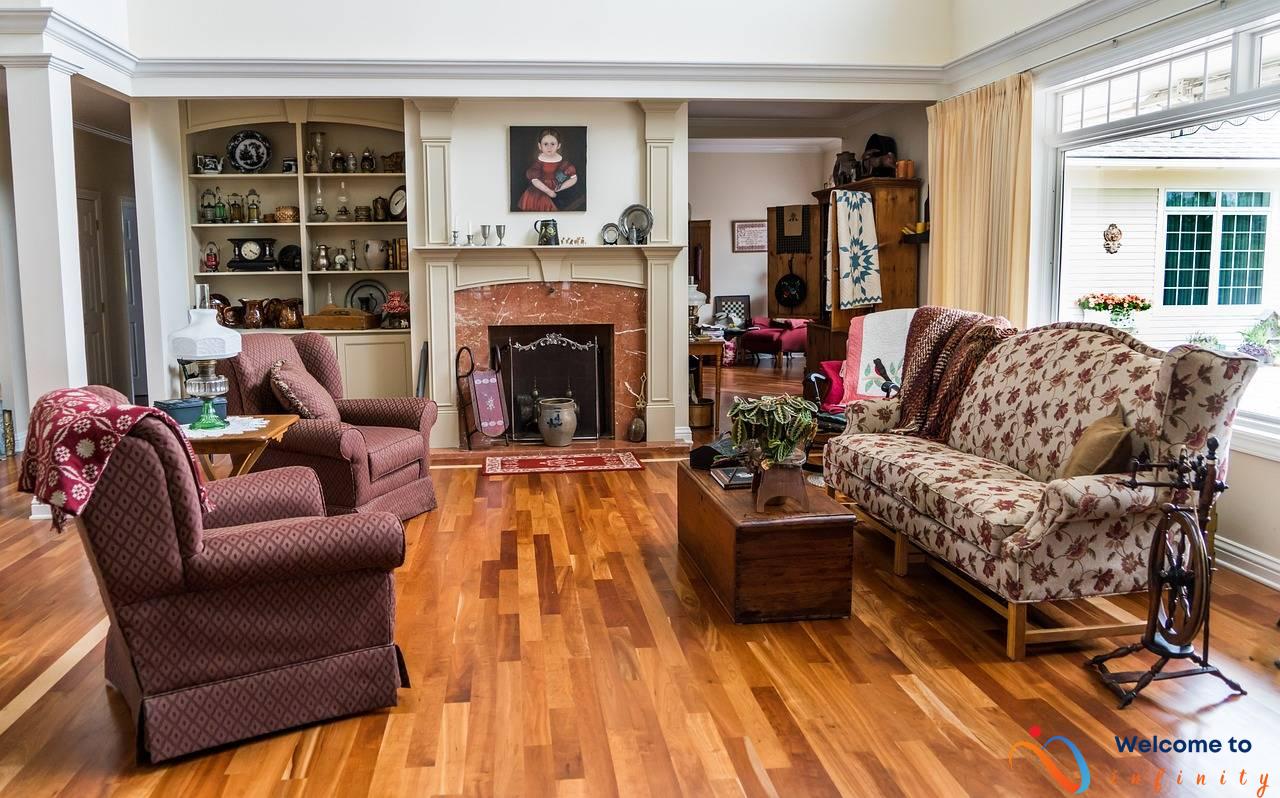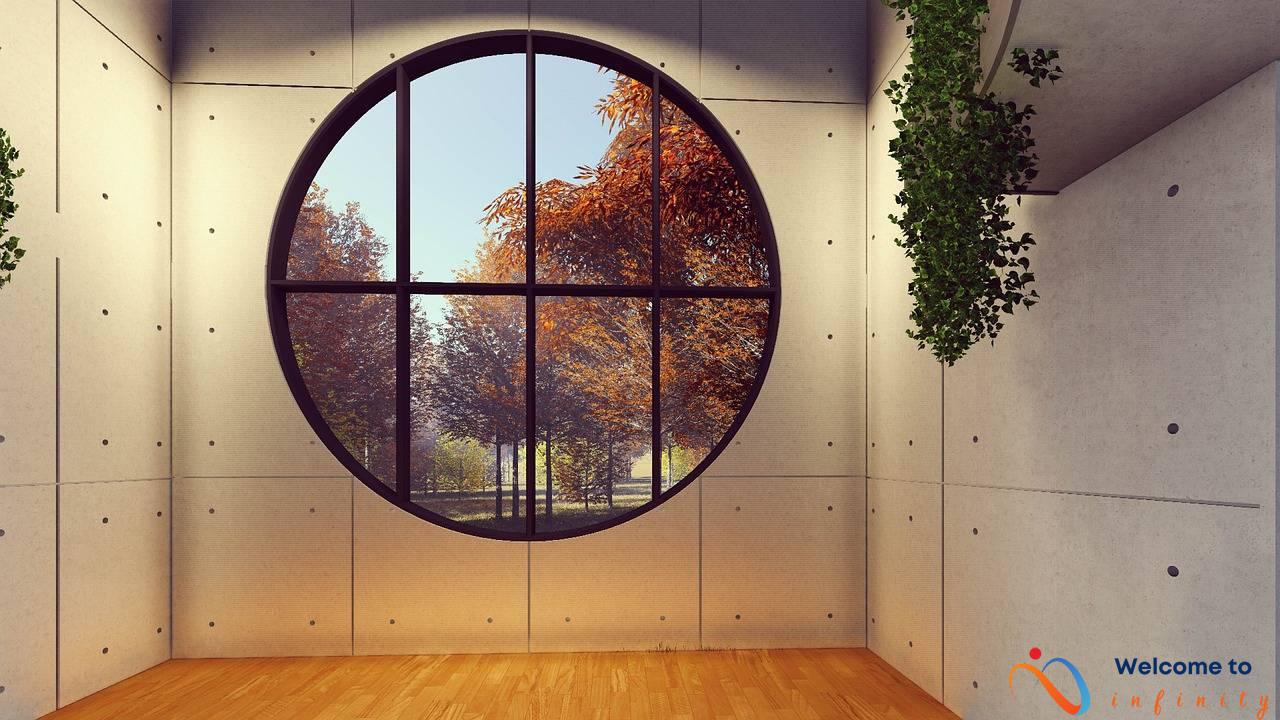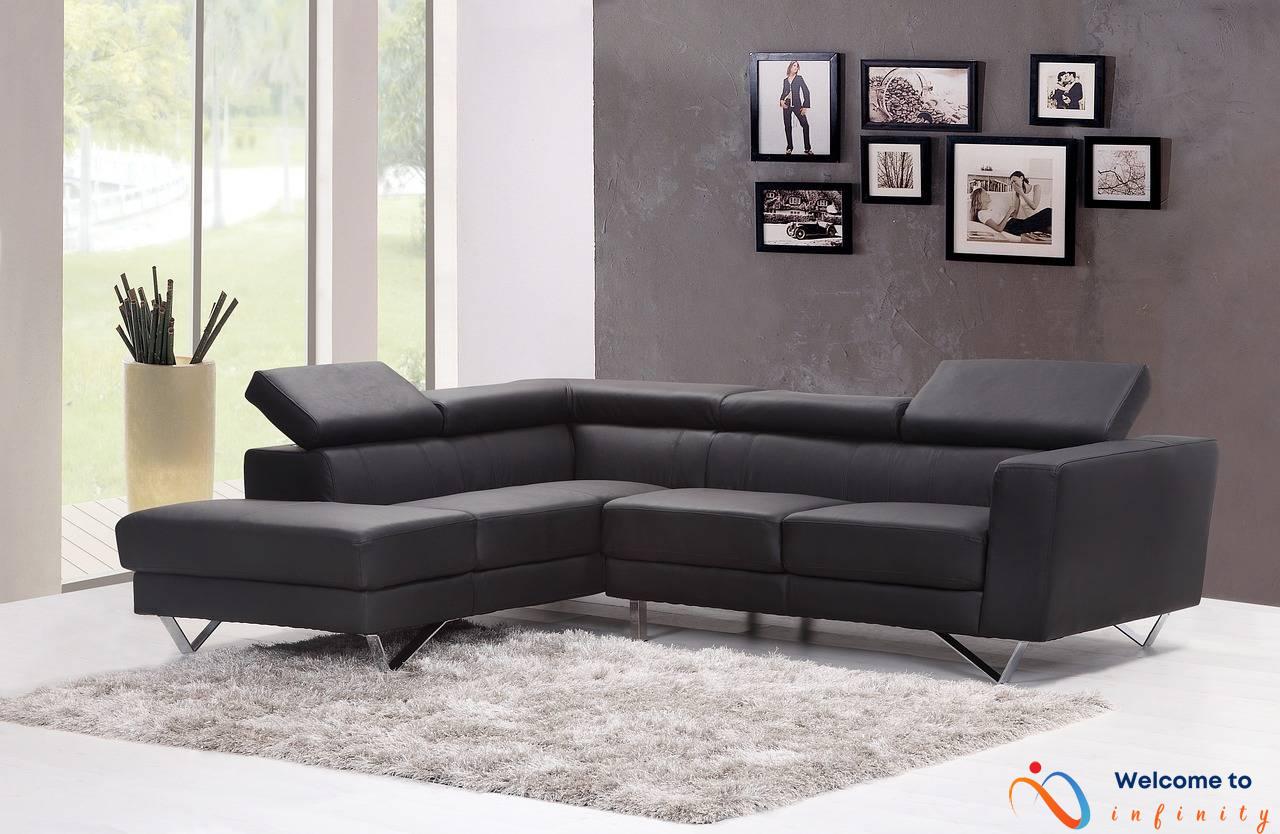The world is becoming more conscious of the impact we have on the environment, making sustainable interior design more popular than ever before. People are determined to create beautiful and eco-friendly living spaces that are in harmony with nature while also reducing their environmental footprint. The concept of green living is no longer an idea, but a crucial necessity.
If you're looking for inspiration for your next interior design project, we've got you covered. Here are some of the latest sustainable interior design trends that are making waves in the industry:
- Upcycling and Repurposing
- Biophilic Design
- Vintage and Secondhand
- Smart Technology
| Trend | Description |
|---|---|
| Upcycling and Repurposing | Reclaimed materials and old furniture are given a second chance as eco-friendly materials for interior design. Not only do they add character and charm to the space, but they also reduce waste. |
| Biophilic Design | Natural elements, such as plants, water features, and natural light, are incorporated into interior spaces. They have been proven to reduce stress, improve air quality and increase productivity. |
| Vintage and Secondhand | The use of secondhand furnishings is becoming increasingly popular. These pieces can add character and charm to a space while also extending the life of furniture and decor and reducing waste. |
| Smart Technology | Energy-efficient appliances, smart thermostats, and automated lighting reduce energy consumption while making spaces more sustainable and eco-friendly. |
These trends show that sustainable interior design is not just a trend, it's a mindset. The trend is moving towards designs that combine aesthetics and environmental awareness. By choosing eco-friendly materials and upcycling old furniture, we are reducing waste and creating unique spaces that are beautiful and sustainable.
If you're looking to redesign your living space soon, keep these trends in mind. Not only will you give your home a new look, but you'll also contribute to a greener future while doing so. It's a win-win situation!
Upcycling and Repurposing
Interior design is not just about creating a beautiful space, it's also about creating an eco-friendly and sustainable environment. Upcycling and repurposing is one of the most popular interior design trends and it's easy to see why. By using reclaimed materials and repurposing old furniture, you can reduce waste and give new life to old items.
Upcycling and repurposing can add character and charm to a space. For example, an old ladder could be transformed into a bookshelf or a coffee table. An old door could be turned into a headboard or a room divider. These unique pieces can make a space feel more personal and inviting.
If you're on a tight budget, upcycling and repurposing can save you money. Instead of buying new furniture or decor, you can find old items and transform them into something new.
- Old windows can become a picture frame or a room divider
- Old dressers can become bathroom vanities
- Old pallets can become outdoor furniture
Upcycling and repurposing also has an environmental impact. By giving new life to old items, you're reducing waste and preventing items from ending up in a landfill. This is an important step in creating a more sustainable future.
By incorporating upcycling and repurposing into your interior design, you can create a unique and eco-friendly space that reflects your personality and values. It's a win-win situation for both you and the environment.
Biophilic Design
Biophilic design is a sustainable interior design trend that has gained popularity in recent years. It involves incorporating natural elements such as plants, water features, and natural light into interior spaces. These elements not only add aesthetic value but also provide several health benefits.
research shows that biophilic design can help reduce stress levels, improve air quality, and increase productivity. The presence of plants in a space has been linked to lower stress levels and improved cognitive function. Water features such as fountains and aquariums can have a calming effect on individuals and can help improve air quality by releasing moisture into the air.
Natural light is also an essential component of biophilic design. Exposure to natural light has been shown to improve sleep quality, regulate mood, and boost serotonin levels. Additionally, natural lighting can help reduce energy consumption by reducing the need for artificial lighting.
Biophilic design can be incorporated into any space, from homes to offices to public spaces. Living walls, which are vertical gardens, are a popular feature in biophilic design. These walls can be customized to fit any space and can help improve air quality by removing toxins and pollutants.
Incorporating biophilic design into interior spaces can have lasting positive effects on individuals and the environment. By including natural elements in our surroundings, we can create spaces that are not only aesthetically pleasing but also healthy and sustainable.
Living Walls
=Living walls, also known as green walls, have been gaining popularity in interior design lately. They are an excellent example of biophilic design, which brings natural elements such as plants into indoor spaces. These vertical gardens are made up of plants grown on a framework or structure attached to walls. They not only add a touch of nature to a living space, but they also offer various benefits, including improving air quality, reducing noise pollution, and promoting relaxation and productivity.
One of the biggest advantages of living walls is their ability to improve indoor air quality. A study conducted by NASA found that plants can help filter out common toxins and pollutants found in indoor spaces, such as formaldehyde and benzene. By releasing oxygen and absorbing carbon dioxide, they help reduce the levels of carbon dioxide in enclosed spaces, making them healthier and more conducive to work or relaxation. With living walls, you can create a natural air filter that improves the indoor environment of your home or office.
Apart from their environmental and health benefits, living walls also make for an attractive and eye-catching addition to any space. They can be used to create a focal point in a room, divide spaces, or add depth and texture to a wall. Living walls are also a sustainable design choice, as they provide insulation, reducing the need for heating and air conditioning and saving energy costs.
- To sum up, here are some of the benefits of using living walls in a sustainable interior design:
- Improves indoor air quality
- Reduces noise pollution
- Promotes relaxation and productivity
- Creates an attractive and eye-catching design feature
- Saves energy costs by providing insulation
- Offers a sustainable design choice for a space
Living walls come in various sizes and styles, making it possible to customize them according to personal preferences. From small, compact arrangements to full walls covered in plants, the possibilities are endless. Incorporating a living wall into your home or office is a sustainable design choice that will add natural beauty to your living space while benefiting the environment and your health.
Natural Fiber and Non-Toxic Materials
Interior designers are increasingly adopting natural fiber and non-toxic materials in their designs to create eco-friendly and sustainable interiors. Some of the popular materials in this category include jute, hemp, organic cotton, bamboo, and cork.
Jute and hemp are natural fibers that are sturdy, biodegradable and low maintenance. Furniture made of these fibers has a unique texture and adds a rustic touch to the decor. Organic cotton is also an excellent choice as it is grown naturally without the use of synthetic fertilizers or pesticides, making it non-toxic.
Bamboo is a highly sustainable material that is fast-growing and can be harvested easily without damaging the environment. It is highly versatile and can be used for anything from flooring to furniture.
Cork is another popular choice as it is a renewable resource that can be harvested every nine years without harming the tree. It has excellent insulating properties and is ideal for flooring, wall coverings, and furniture.
By using these materials, designers can create interiors that are not only aesthetically pleasing but also environmentally friendly. These materials are non-toxic, biodegradable and have a low carbon footprint, making them a perfect choice for those who want to reduce their impact on the environment.
In addition, opting for natural fiber and non-toxic materials also provides health benefits such as improved air quality and reduced exposure to harmful chemicals. These materials also have a timeless quality and will last for years to come, making them a great investment for homeowners.
In conclusion, incorporating natural fiber and non-toxic materials in interior design is a sustainable approach that benefits both the environment and the homeowners. These materials offer a range of design options and health benefits, making them a must-have for any eco-conscious homeowner or interior designer.
Vintage and Secondhand
The trend of using vintage and secondhand furnishings in sustainable interior design is gaining momentum. These pieces add a unique character and charm to a space that cannot be achieved through modern furniture. Moreover, by purchasing secondhand items, we extend the life of furniture and decor, which reduces waste and promotes sustainability.
One of the advantages of using vintage furniture is that it is often made from high-quality materials, such as solid wood, which ensures durability and longevity. Also, the craftsmanship and design of vintage furniture are often superior to modern pieces, providing a timeless and classic appeal. By choosing high-quality, long-lasting furniture, we reduce the need for constant replacements, which ultimately benefits the environment in the long run.
Thrifting is a great way to find unique and sustainable furnishings for a space. Secondhand shops, flea markets, and estate sales are all great places to source vintage items. Thrift shopping is not only an affordable option, but it also reduces the carbon footprint by keeping usable items out of landfills. Additionally, by buying secondhand, we are contributing to the circular economy, which ensures that existing products continue to be used, rather than being discarded and replaced.
Another way to incorporate vintage items into sustainable interior design is by upcycling them. Upcycling is the process of transforming old or unwanted items into something new and useful. For instance, old doors can be turned into coffee tables, and retired ladders can be made into bookshelves. By upcycling, we are creating a unique and sustainable piece while also reducing waste.
Overall, incorporating vintage and secondhand furnishings is a great way to promote sustainability in interior design. By giving old items a new lease on life, we reduce waste, save money, and add a distinct character to our spaces.
Antiques
Incorporating antique furniture and decor pieces into sustainable interior design is gaining popularity. Not only do they add character and a unique feel to a space, but they are also known for their durability and long-lasting quality. Antiques have proven their value over time, and their timeless aesthetic ensures that they will never go out of style.
Antique furniture is often made from solid wood, which makes it more robust than modern-day furniture that is often made from particleboard or veneer. Additionally, antique pieces are built to last and can withstand heavy use. When compared to new furniture, antiques typically have a longer lifespan due to the quality of materials and craftsmanship. This makes them a smart investment and a sustainable choice.
Antique decor pieces are also a great way to add character and history to a space. They can tell a story and offer a glimpse into the past. Choosing antiques over mass-produced decor items not only reduces waste but also adds personality to a room.
When incorporating antiques into a sustainable interior design, it is essential to consider the environmental impact. By buying antiques, you are keeping them out of landfills and supporting a circular economy. Additionally, by reusing and repurposing antiques instead of buying new, you are reducing the demand for new products and reducing the carbon footprint.
- Antique furniture and decor pieces add character and a unique feel to a space.
- Antiques are renowned for their durability and long-lasting quality.
- Antiques are a smart investment and a sustainable choice due to their lifespan and quality.
- Choosing antiques over mass-produced decor items is an environmentally conscious decision that supports a circular economy.
Thrift Shopping
Thrift shopping has become increasingly popular in recent years, as people look for ways to live more sustainably and reduce their carbon footprint. By buying secondhand, you can give new life to old furniture and decor, and keep these items out of landfills. Not only does this reduce waste, but it also helps to reduce the environmental impact of manufacturing new items.
Thrift stores and flea markets can be a treasure trove of unique and stylish furnishings that you won't find anywhere else. From vintage chairs and lamps to gently used rugs and curtains, there are plenty of options to choose from. Plus, you'll often find items at a fraction of their original cost, making thrifting an affordable way to decorate your space.
When thrift shopping, it's important to keep an open mind and have a clear idea of what you're looking for. It can be easy to get caught up in the excitement of finding a bargain, but it's important to make sure the item fits your aesthetic and will work with your existing decor. Taking measurements and photos of your space before you go can also be helpful.
Another great thing about thrifting is the opportunity to support local businesses and charities. Many thrift stores are run by non-profit organizations, and your purchases can help to support their programs. Plus, buying secondhand supports the circular economy and encourages others to donate or sell their own items instead of throwing them away.
Overall, thrift shopping is a fun and sustainable way to decorate your space. By keeping an open mind and having a clear idea of what you're looking for, you can find unique and stylish items that won't break the bank or harm the environment.
Smart Technology
Smart technology has been used for decades in creating sustainable and eco-friendly interiors. Technology such as smart thermostats, automated lighting, and energy-efficient appliances can all help to reduce energy consumption and create a more sustainable space.
A smart thermostat is a heating and cooling control system that can help you save money while reducing your carbon footprint. These thermostats learn your preferences and adjust the temperature according to your schedule. This automatically regulates energy usage and reduces wastage.
Automated lighting is another feature of smart technology that can contribute to a sustainable interior design. With automated lighting, you can control the lighting in your home or office using an app on your phone. This means you can switch your lights on and off from anywhere, and save energy whenever possible.
Energy-efficient appliances are also a great way to create a sustainable interior design. Widespread use of energy-efficient appliances like refrigerators, dishwashers, and washing machines significantly reduces energy consumption. These appliances use less energy and water, and this reduces your power bills while helping the environment at the same time.
Smart technology can make a positive impact on the environment and make a significant contribution to sustainable interior design. With developing technology, you will have access to more sustainable designs in the future.












